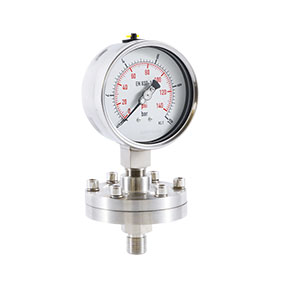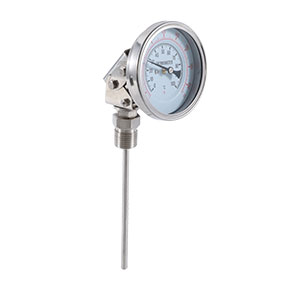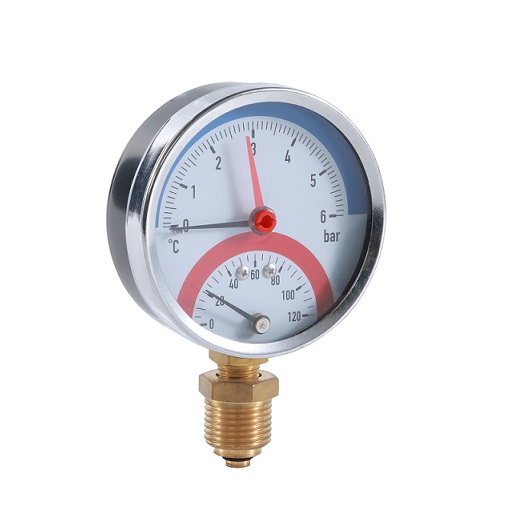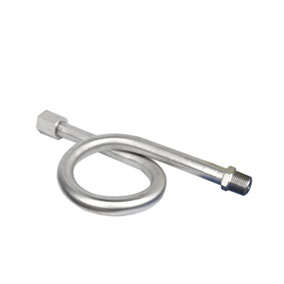Mastering Pressure Gauge Performance: A Quick Troubleshooting Guide

Introduction: Pressure gauges are vital instruments in various industries, providing critical insights into operational conditions. However, issues can arise, affecting their accuracy and reliability. In this quick reference guide, we'll explore common problems associated with pressure gauges and offer actionable troubleshooting solutions to keep your equipment performing at its best.
1. Inaccurate Readings: Issue: Pressure gauges displaying inaccurate readings. Solution: Regularly calibrate gauges using certified devices and inspect for any debris or damage that may affect accuracy.
2. Needle Fluctuations: Issue: Needle fluctuations or vibrations during operation. Solution: Check for loose fittings or connections and secure them. Ensure proper installation for stable needle movement.
3. Leaks Around Fittings: Issue: Leakage at gauge connections or fittings. Solution: Tighten connections or replace damaged fittings. Apply thread sealant to prevent future leaks.
4. Condensation Inside the Gauge: Issue: Moisture buildup affecting gauge readings. Solution: Install gauges with built-in diaphragm seals and ensure proper venting to prevent condensation.
5. Over-Pressure Damage: Issue: Damage due to pressures exceeding specifications. Solution: Use pressure-limiting devices for protection. Consider upgrading to a gauge with a higher pressure rating if necessary.
6. Corrosion and Rust: Issue: Corrosion impacting gauge performance. Solution: Opt for corrosion-resistant materials. Implement regular inspections and cleaning to prevent corrosion.
7.The Importance of Quality Pressure Gauges:
Investing in high-quality pressure gauges is paramount for accurate and reliable measurements. Quality gauges not only withstand environmental challenges but also provide long-lasting performance, contributing to the overall efficiency of your operations. Here are three highly recommended pressure gauges known for their precision and durability:
[Ygauges pressure gauges]: Renowned for its accuracy and robust build, this gauge is suitable for demanding industrial environments. It offers a wide pressure range and exceptional durability.
Investing in quality pressure gauges not only ensures accurate readings but also minimizes the likelihood of issues. When selecting a pressure gauge, consider your specific operational needs and the environment in which it will be used.
8. Mechanical Wear and Tear: Issue: Wear on mechanical components over time. Solution: Promptly replace worn parts. Follow the manufacturer's recommended maintenance schedule.
9.Electrical Failures (Digital Gauges): Issue: Digital gauge electrical failures. Solution: Check power sources and connections. Replace batteries or address electrical issues promptly.
Conclusion: Troubleshoot Like a Pro
Effectively troubleshooting pressure gauge issues ensures reliable performance and accurate data. Regular maintenance, calibration, and adherence to manufacturer guidelines are key to addressing problems promptly. For personalized assistance and in-depth troubleshooting, consult with experienced technicians or the gauge manufacturer's support team.
Expert Tips for Ongoing Success:
- Routine Checks: Regularly inspect gauges for wear, leaks, and damage.
- Calibration Calendar: Schedule regular calibration checks to maintain accuracy.
- Environmental Awareness: Consider the operating environment's impact on gauges and choose accordingly.
- Thorough Documentation: Keep detailed records of installations, maintenance, and calibration activities.
- Employee Training: Ensure personnel are trained in troubleshooting procedures and gauge handling.
Final Thoughts: Optimize Your Operations with Precision
By mastering pressure gauge troubleshooting, you enhance operational efficiency and minimize downtime. Implementing the tips in this quick reference guide ensures your pressure gauges perform at their best, contributing to the success of your industrial processes. Stay proactive, address issues promptly, and elevate the longevity and reliability of your pressure measurement systems.




